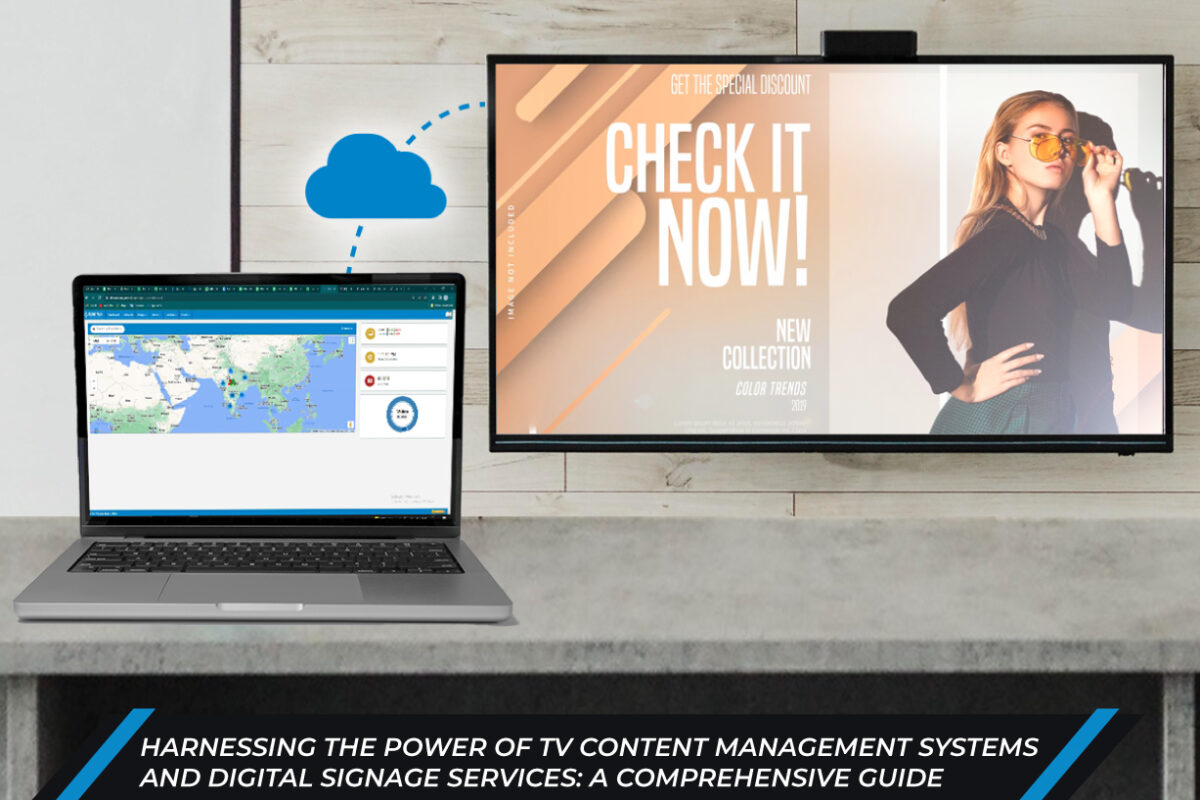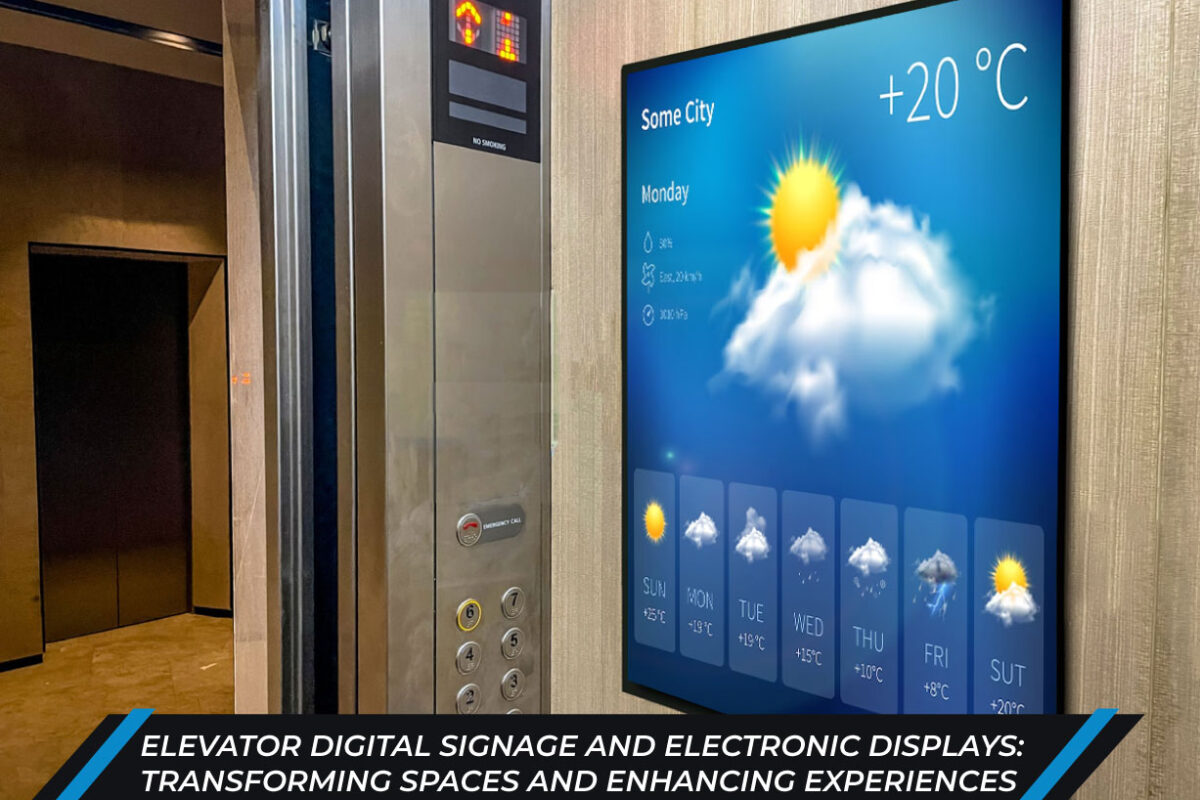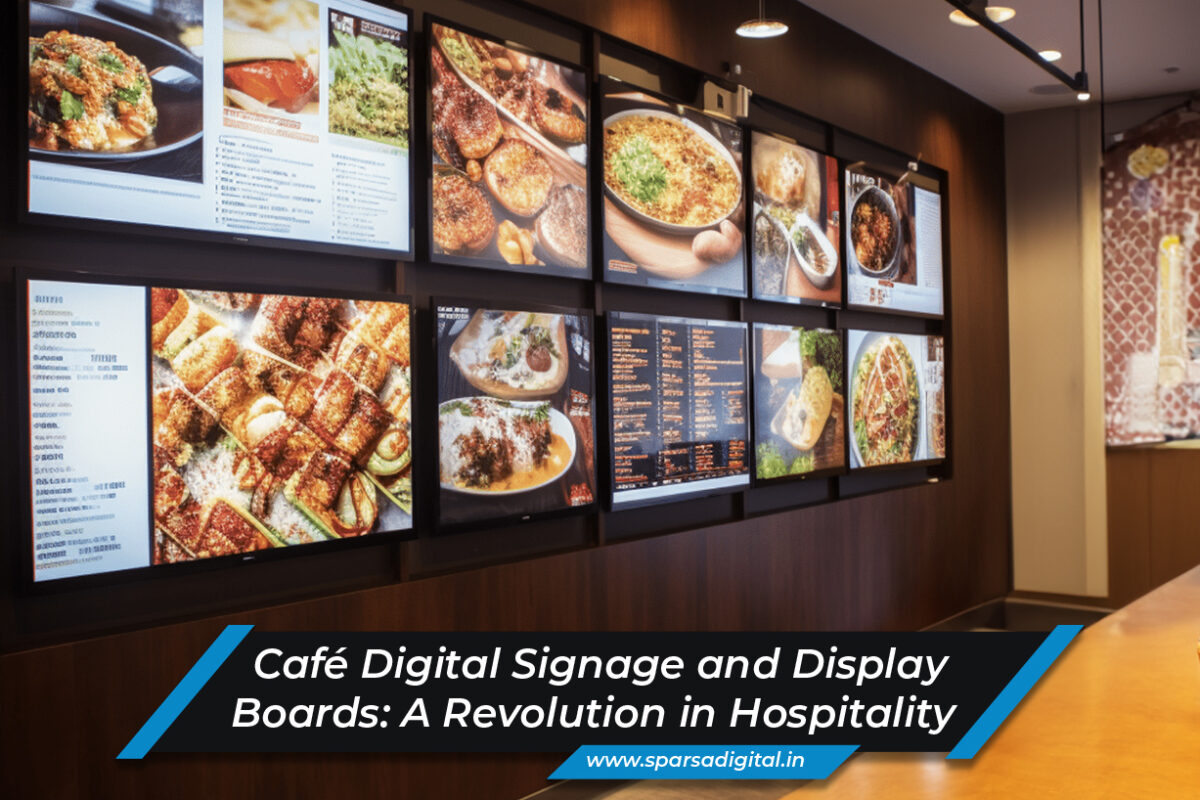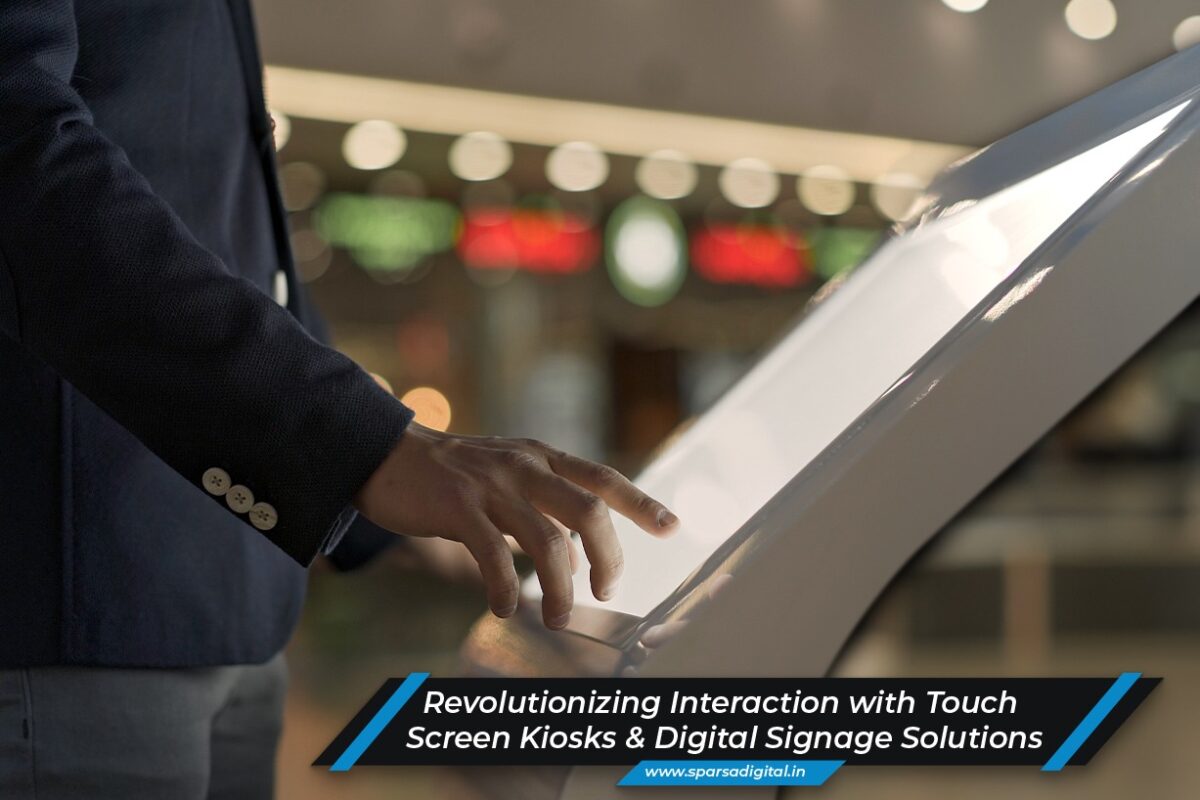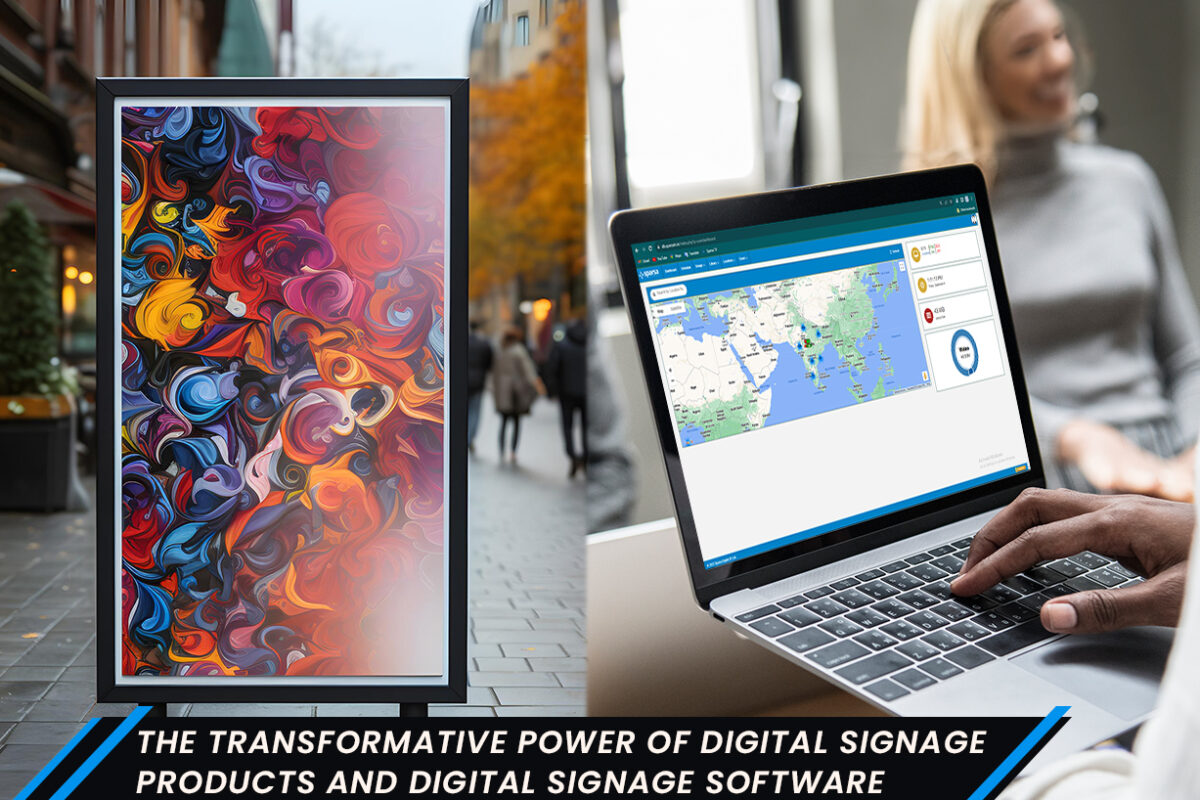In today’s fast-paced world, businesses, organizations, and institutions are constantly seeking innovative ways to capture the attention of their target audiences, convey messages effectively, and enhance user experiences. Two powerful tools that have emerged to address these challenges are TV Content Management Systems (TV CMS) and Digital Signage Services. In this comprehensive blog post, we will explore the extensive benefits and diverse applications of TV CMS and Digital Signage Services, ranging from retail and hospitality to education, healthcare, and more.
I. Understanding TV Content Management Systems (TV CMS)
What is a TV CMS?
A TV Content Management System, often referred to as a TV CMS, is a centralized platform designed to manage and deliver multimedia content to television displays, often in public spaces. These systems offer a user-friendly interface for creating, scheduling, and updating content, allowing organizations to control what is displayed on their screens with ease.
Key Components of a TV CMS
To better understand the benefits, let’s delve into the essential components of a TV CMS:
- Content Creation: Users can design and customize multimedia content, including images, videos, text, and animations.
- Content Scheduling: TV CMS allows users to schedule content to appear on specific screens at designated times, enabling timely and relevant messaging.
- Remote Management: Centralized control allows for content updates and management from anywhere, making it a convenient and efficient solution.
- Playback Devices: TV CMS relies on playback devices, such as media players or smart TVs, to display content on screens.
Benefits of TV CMS
Now, let’s explore the various advantages of implementing a TV Content Management System:
1. Engaging Content: TV CMS empowers organizations to create dynamic and eye-catching content that grabs the attention of viewers. This is particularly important in retail environments, where captivating visuals can drive sales.
2. Timely Messaging: Businesses can deliver time-sensitive messages, promotions, and announcements precisely when they are most relevant. This real-time capability is invaluable for events, promotions, or emergency alerts.
3. Targeted Communication: TV CMS enables organizations to segment their audience and deliver tailored messages to specific screens or locations, ensuring that content resonates with the intended viewers.
4. Increased Interactivity: Some TV CMS platforms support interactive elements, allowing users to engage with content through touch screens or mobile devices. This is particularly useful in museums, educational institutions, and trade shows.
5. Cost-Effective: Compared to traditional print advertising or manual content updates, TV CMS reduces printing costs and labor, making it a cost-effective long-term solution.
6. Analytics and Insights: TV CMS platforms often provide analytics and reporting tools, offering valuable insights into audience engagement and the effectiveness of content.
II. Digital Signage Services: Enhancing Visual Communication
What is Digital Signage?
Digital signage refers to the use of digital displays, such as LED screens, LCD monitors, or projectors, to present multimedia content in public spaces. These displays are commonly used for advertising, information dissemination, entertainment, and wayfinding.
Key Components of Digital Signage Services
To harness the full potential of digital signage, it’s crucial to understand its key components:
- Content Creation and Management: Similar to TV CMS, digital signage relies on content creation and management systems to design and schedule multimedia content.
- Display Screens: These are the physical screens used to display content, and they come in various sizes and types to suit different environments.
- Media Players: Digital signage solutions often require media players or devices that connect to the display screens and deliver the content.
- Network Connectivity: Digital signage relies on a network connection to receive updates and deliver content in real-time.
Benefits of Digital Signage Services
Now, let’s delve into the myriad advantages offered by Digital Signage Services:
1. Dynamic Visual Impact: Digital signage captivates audiences with vibrant visuals, videos, and animations, making it a powerful tool for advertising and branding.
2. Real-Time Updates: Unlike static signage, digital signage can be updated remotely, ensuring that content is always fresh and relevant.
3. Multifunctional: Digital signage serves multiple purposes, including advertising, information dissemination, entertainment, and wayfinding. It can adapt to various contexts and industries.
4. Improved Customer Experience: In retail and hospitality, digital signage enhances the customer experience by providing valuable information, promoting products, and reducing perceived wait times.
5. Cost-Efficiency: While there is an initial investment in hardware and software, digital signage ultimately reduces costs associated with printing and manual updates.
6. Increased Revenue: Businesses can generate revenue by renting ad space on their digital signage displays to third-party advertisers, providing an additional income stream.
III. Applications of TV CMS and Digital Signage Services
Now that we’ve explored the benefits of TV CMS and Digital Signage Services, let’s examine their diverse applications across various industries:
Retail
In the retail sector, TV CMS and digital signage services are extensively used to:
- Promote products and sales.
- Provide pricing and product information.
- Enhance the shopping experience with interactive displays.
- Entertain and engage customers while waiting in line.
- Create brand awareness and recognition.
Hospitality
In the hospitality industry, digital signage is employed to:
- Display event schedules and information for guests.
- Promote hotel amenities and services.
- Provide wayfinding assistance within large hotel complexes.
- Offer in-room entertainment and information.
Education
Educational institutions leverage TV CMS and digital signage to:
- Share announcements, news, and emergency alerts.
- Display class schedules and room assignments.
- Showcase student achievements and campus events.
- Enhance interactive learning experiences.
Healthcare
Hospitals and healthcare facilities use digital signage for:
- Wayfinding and navigation within complex facilities.
- Sharing important health information and tips.
- Displaying wait times and patient updates.
- Promoting health and safety protocols.
Corporate Environments
In corporate settings, TV CMS and digital signage services are employed for:
- Internal communications and employee engagement.
- Sharing company news and updates.
- Welcoming visitors and conveying company culture.
- Displaying real-time data and performance metrics.
Transportation
In the transportation sector, digital signage is used to:
- Provide real-time information about arrivals and departures.
- Display route maps and schedules.
- Share safety and emergency instructions with passengers.
- Offer advertising opportunities to generate revenue.
IV. Best Practices for Implementing TV CMS and Digital Signage Services
To maximize the benefits of TV CMS and digital signage, organizations should follow these best practices:
Content Strategy
Develop a clear content strategy that aligns with your goals and target audience. Ensure that content is engaging, relevant, and visually appealing.
Hardware and Software Selection
Choose the right hardware (display screens, media players) and software (TV CMS or digital signage platform) that meet your specific needs. Consider factors such as screen size, resolution, and scalability.
User Training
Provide training for staff responsible for content creation, scheduling, and management. Ensure that they are proficient in using the chosen TV CMS or digital signage platform.
Content Updates
Regularly update content to keep it fresh and relevant. Monitor audience engagement and make adjustments based on analytics and feedback.
Security and Maintenance
Implement security measures to protect against unauthorized access and content tampering. Establish a maintenance schedule to address hardware and software issues promptly.
Conclusion
TV Content Management Systems (TV CMS) and Digital Signage Services have become indispensable tools for organizations looking to engage audiences, deliver targeted messages, and enhance user experiences. Whether in retail, hospitality, education, healthcare, corporate environments, or transportation, the benefits of these technologies are far-reaching. By following best practices and staying attuned to emerging trends, organizations can harness the power of TV CMS and digital signage to captivate audiences and achieve their goals in an increasingly digital world. The future of visual communication is dynamic, interactive, and boundless, offering endless opportunities for innovation and engagement.

